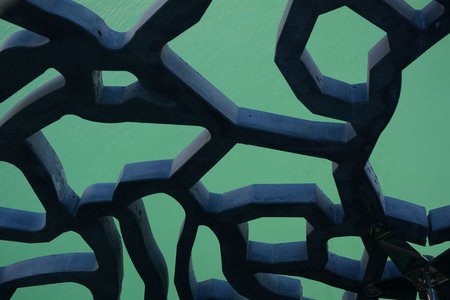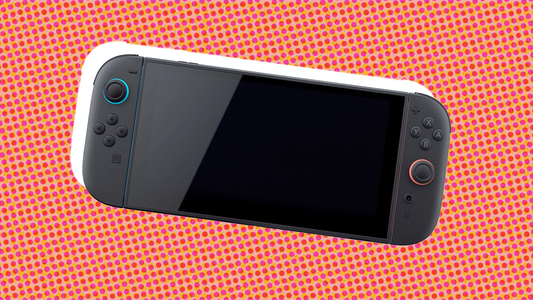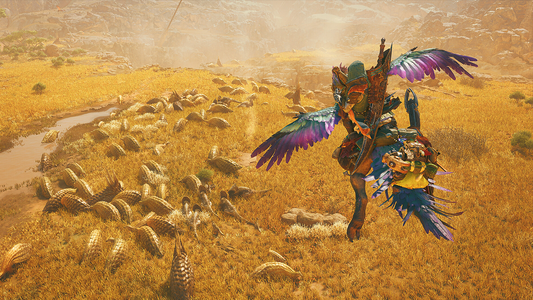Hello all of you fantastic and wonderful people,
I am BACK! I just want to say thank you all so much for the support and kind words from part 1 of my article. Great to see that many of you enjoyed it and feel like you have learned something from it, but we can not linger in the past, instead we must look forward to the second part of what makes good level design for combat.
Introduction
In the first part, I discussed how important it is for you to understand your metrics, scale, weapon, etc. All this planning helps you to create great levels, now that we have an understanding of these crucial elements, it is on us as LDs to crafts spaces that players can have a great amount of fun and enjoyment with. In this article I will be breaking down the next steps of the process of the 2d design, then looking at a level I created and breaking down what I think made it a good level for combat.

Pre-production - Research
Now that we have gathered all the useful information to help us we need to move through to the research stage of our level design. This stage can not and should not be skipped, it is crucial to not only making a good level but also a believable level (A quick side tangent, always keep in mind and to quote my friend Stuart Scott we are creating ‘Believable not realistic spaces’ meaning we do have creative freedom within our levels)

Now you will be set a location for your level, this could be a castle, maybe a hotel or even a space station. Regardless of what that location maybe you will need to make sure that you have an understanding of how these spaces work such as:
What rooms do this area normally contain?
How do people interact with this location before the player arrives?
How does it connect to other spaces?
What is its architectural style?
Where can you find this location?
Which country is this location located?
And other such questions, in order to answer these then you must first do research. You can do this by googling pictures, then entering google maps to find a real-life example, you can start to see how the location looks in real life. Videos are also a great help, or there might even be an example in other games. I strongly recommend gathering not just images of the location but also floor plans as well.

The reason for this is it helps you see the overall picture of a location as well as how some typically look. Not only that but this is a great starting point for your own level, as you can use this as a basis for your level. Even better with this, you can not start to see which rooms in a floor plan can be kept, removed or altered. Maybe there are too many rooms that are dead ends which do not give a good loop for combat, or there are not enough spaces for hidden loot, well now you can tweak these in your floor plan but still keep that location-based in reality.
From doing your research not only will you have a basic understanding of how the locations flows together but you can grasp the theme of location, how it looks at certain times of days, How it will look if it is abandoned or when it is fully functional.
Now the gathering resources is in full motion, you can use many different cool tools to store them, from it either being a folder on your computer or Pinterest or Google Docs as long as you have easy ways to access your files that are the most important thing. It is important because you will need to make sure you have access to them while creating your level to constantly reference. Yet it is not only important for your beautiful LD eyes but it will come in handy in reviews, so that when leads or directors are checking your work they can see why it looks the way it does but also helps them understand how you got to this layout and why, also this will really help your teammates in Enviro Art so they can get a much more vivid vision of how the location should look.
As for example, you may be asked to build a level set in a church, but this church is built in a Latin community. Yet when I think of a church I visualize a huge Gothic church in the shape of a cross, but that would never fit inside a Latin community. By doing your research you can see how different areas and communities view the same space, making sure you create more authentic and believable spaces.
Once you have gathered enough references (50 images minimum in my opinion) you can start to move to the next step.
Pre-production - 2d Map
One of the most commonly asked questions I receive is “Max should I do 2d maps, is that the right way?” now for me the answer is yes. I used to do them and then stopped and just jumped straight into the blockout, but I noticed that my quality of my work decrease as well as it taking longer when staring at that ominous blank screen.
There are many reasons I believe 2d sketches to be important, such as:
Quicker to start work on blockout
Easier to address feedback
Allows you to see the flaws quicker
Helps you go through multiple iterations before choosing and starting a blockout​
Now I know some of my other friends and other designers I have met use Google Sketch-Up before creating their blockout as it helps get a better sense of scale. Honestly, both are great, the point you should take away from this section is that you need to plan before your blockout.
Do people also feel that when they do a 2d map or a form of planning they feel that they are trapped? I put a ‘?’ because you should not. This is a plan meaning this can and should change, this is your starting point! Meaning that you can and must make changes as you see fit, I even did this in a recent level I made, do not be afraid to change from your plan if it does not feel right.
Now with these points added to your pipeline of level creation, we are going to do a break down of a combat level I created and break it down.
(Before we do this though, do make sure to check out this great article which is fantastic for what to think about when creating your levels and brings forth some additional points on things to consider when making your levels)

Case Study - Part 1
Okay, you now know how important pre-production is to your level, we are now going to get to the sexy part, which is the level itself. I created a small combat level for a task, now we will be breaking down the level and showing what I believe helps make this level good for combat.
Quick side note, all of those documents in part one were my design rules and metrics and those were what I was referring to when I created my level. This level was not built or set on any particular location, we had a week to create Three combat spaces, so there is no reference images, just more of me creating a space that felt right.
With no research I had my restrictions for space of 30x30m as well I could only use five enemies, with cover spacing of 2m and with that I created my 2d map.

As you can see, it is not the prettiest of sketches but it gets the job done. It is very important when you do a sketch that you do use grid paper. The reason for this that you can get a sense of scale as well when it comes to putting it in the editor it you can translate the cube on the paper for 1m and use that to block out your level in the editor.
When creating the level (and hopefully you can see this) that I wanted essentially split the space into quarters, so that the player could feel a difference in each section, but also feel a sense of progression.
Quartering the level allowed me to reveal information to the player slowly, not just throwing them into the middle of a battleground. It allows the player to focus on the task at hand, before showing more slowly, also by hiding certain information from the player it also plays to their disadvantage making the challenge feel even stronger. Another reason I was splitting up space is the fact that it can and will reduce Long lines of sight. This way it forces players to move through the space in order to engage in combat, while also making them move to get an understanding of how the space is connected.

Part of how I quarter the level is by div




































